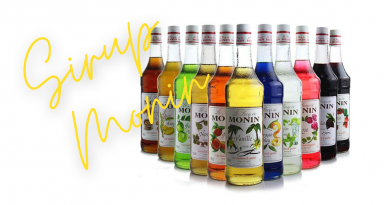Coffee, From Heart of Indonesia to The World
Coffee is one of the world’s commodities carries the name Indonesia, especially Java. In the world of coffee, a cup of coffee is termed
as a cup of java. Indonesia (especially Java) since the Dutch era known as a coffee producer with the best taste in the world.
Currently, Indonesia is a producer as well as well as an important consumer of coffee commodities. As a producer, Indonesia ranks
fourth after Brazil, Vietnam and Colombia, and as a consumer is seventh (International Coffee Organization (ICO), 2017).
For Indonesian people in general, drink coffee has become a part of everyday life especially for old people and now young children and adolescents.
ICO (2015) shows the growth of drinkerscoffee in Indonesia is rowing rapidly, more than world growth, which is 8% for growth Indonesian coffee drinkers while growing world coffee drinkers only reach 6%. Association Indonesian Coffee Exporters and Industry (AEKI) mentioning the growth in national coffee consumption increased from 0.8 kilograms per capita to 1.3 kilograms per capita.
Development of he coffee industry 2 | IKM Coffee Business Opportunities the world also has an impact on the Indonesian coffee industry.
The Indonesian coffee industry has experienced an increase in
downstream industry as seen on its rise cafes and coffee shops today.
Coffee as a plantation product in Indonesia too quite importantly, it ranks sixth after palm oil, rubber, sugar, tea and cocoa. Position Indonesia as an important consumer because increase in domestic demand can reducing its availability for export markets for the world market.
Important industry trends coffee is summarized in the annual ICO review of the year First, in terms of production, availability Robusta Coffee will come under pressure, because of the weather has influenced coffee production in Vietnam and Indonesia.
In the long run, world consumption can continue increasing, at a rate of slightly below 2% per years, but East and Southeast Asia is rowing on above 5%. Total world consumption is predicted to increase if production can keep up. If production continues to be under pressure, forecasted prices will tend to go up.
The global challenges of the coffee industry today it is a production deficit, that is, deep recent years (2005-2016) consumption has been
exceed production capability, though not yet causing a supply shortage because it is still available coffee surpluses in 2012-2013 and 2013-2014.
After experiencing a decline since 2010-2011 and 2015-2016 lows, the coffee industry started rose after January 2016. Price indicator
ICO composite reached its lowest point ie 106.74 cents USD / lb in January, before recovered and then reached the highest level of
151.69 cents at the end of July 2016.
The world coffee market is dominated by robusta prices are more stable, but since 2016 the market is robusta has also appeared to be up, with market indications London futures are up more than a third since March 2016. This is due to the increase supply concerns over Robusta availability.
ICO (2015) published the results of a study that looked at production costs and economic sustainability from coffee cultivation that shows that for many producers, coffee production is no longer profitable. Income from coffee farming unable to cover production costs.
Problem on this upstream is a threat to sustainability and the main challenges of the coffee industry.
One of 3 Countries with Largest Coffee Producer
Most of the international coffee price movements recently driven by changes in exchange rates against the currencies of the major producing countries, namely against the Brazilian peso and the Colombian peso.
The change prompted an improvement in prices Other producing countries. Challenge other, the trend of market growth since In 2001, only three producers were dominated, namely Brazil, Vietnam and colombia with a market share continue to increase. This is risky because it makes the coffee market is much more vulnerable to events weather.
On the consumption side, private sector consolidation produce less firm ones have more markets. A number of acquisitions private sector has led to the consolidation of its market fast, and although the numbers were a little hard to come by, some estimates suggest that 40-50% the global retail coffee market is divided by only three
company.
Indonesian Coffee and Supply Gap
For Indonesia, the world’s supply of robusta coffee is reduced giving the opportunity to fill gaps, even if weather events cannot redictable could also be a problem. This can trigger the use of more arabica coffee, so it can be expected that the price will go up
This era is an opportunity to promote Arabica coffee which can get more price high and get income from exports.
The dynamic domestic market becomes an alternative and safety net against price volatility international. Indonesia has a strong coffee sector competitive and requires collaboration and coordination between the public and private sectors.

Blog seputar dunia kopi, diulas dengan santai sambil menyeruput.



